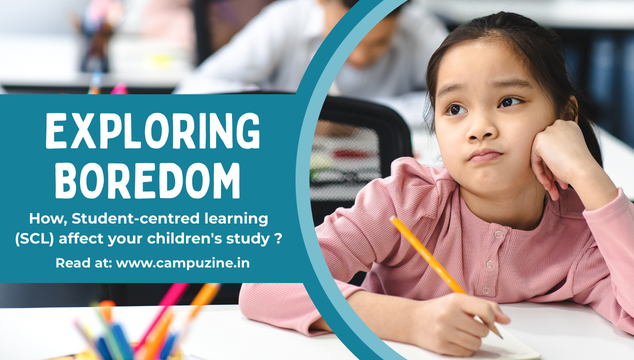
Student-centred learning (SCL) is an active learning strategy where the students are active participants in their learning process. Unlike traditional learning where students learn through passive observation and assimilation of information, SCL encourages students to actively seek, process and apply information. When students are given the freedom to choose what and how they learn it, makes education more meaningful and engaging for them leading to better learning outcomes. The teacher plays a critical role in SCL by mentoring the students, connecting interests with the curriculum and guiding them through key parameters.
The hands-on, participative approach of SCL is one of the effective teaching methods to improve classroom learning, keeping students more engaged and motivated toward their learning. They learn to self-regulate, drive and direct their learning while developing essential skills in leadership, communication, initiative, collaboration, analytical thinking, problem-solving, and creative application. They also learn to set their own goals, assess their progress and find ways to achieve them. This not only leads to better academic performance, it also prepares them for a world beyond school.
The teacher plays a critical role in SCL by mentoring the students, connecting interests with the curriculum and guiding them through key parameters.
Key Student-Centred Learning Approaches
Project-based learning (PBL)
For PBL, students work on extended projects that allow them to examine, research, and respond with creative solutions. The projects could be based on any topic of their choice leading to interdisciplinary learning and problem solving.
Inquiry-based learning (IBL)
Based on the structure of observation, question conceptualisation, investigation and conclusion, IBL is an educational strategy that follows the practice of scientific enquiry. It helps students develop their own deeper understanding of concepts.
Flipped classroom
Reversing the traditional set-up flipped classroom learning makes the classroom an active learning space by allocating concept introduction as homework via teaching videos and other resources. The time in class is used to engage in interactions for deeper understanding.
Problem-based learning
Problem-based learning is an open-ended approach based on real-world problems, that requires students to analytically think and find creative solutions for complex problems. Students use previous knowledge, additional resources, and collaborative work to come up with novel solutions.
Differentiated instruction
In differentiated instruction, teachers can vary the process, learning environment, content, and resources to adapt their instruction design, meeting the needs of individual students and their learning styles.
Choice Board
These involve putting up choices on a board for students to choose how they want to learn about a topic (through reading material, video, project etc.) or be assessed on a concept (through presentation, written exam, demonstration etc.).
Station learning
A key approach for active learning of complex topics, station learning involves the teacher setting up a circuit of learning stations where students spend a pre-defined period of time working through the topic before moving on to another aspect of it.
Simulation
Simulations mimic real-life challenges through virtual set-ups providing students a safe environment to try different options, gain experience, commit mistakes and learn from the choices they make.
Games
Games are a great way to teach healthy competition and engage students to learn through fun activities. They help students enhance their skills, think on their feet, and apply their learning through an immersive experience that offers immediate rewards and gratification.
When we put students at the centre of the learning activity, focusing on engaging them, to learn in ways they find interesting, learning becomes a fun activity of their choice. A willing, focused and engaged student can absorb information faster applying knowledge easily, thus leading to a greatly enhanced learning outcome. Through SCL students perform better academically while learning essential skills which prepare them for a world beyond the classroom.